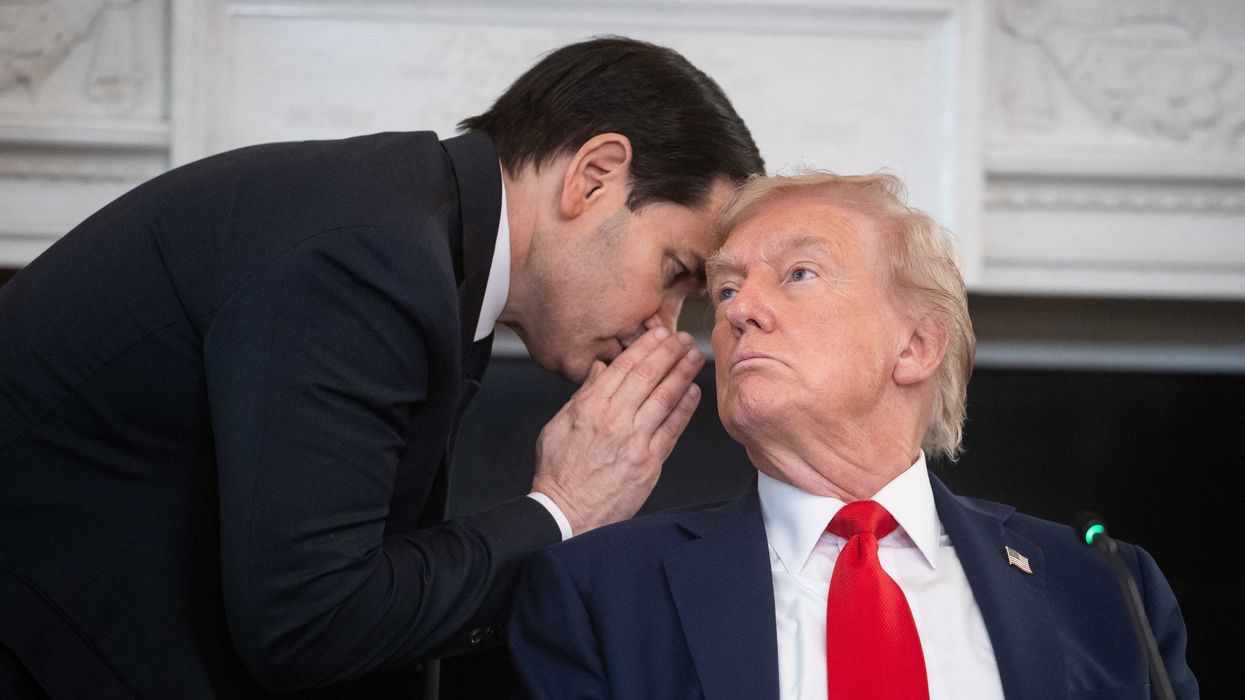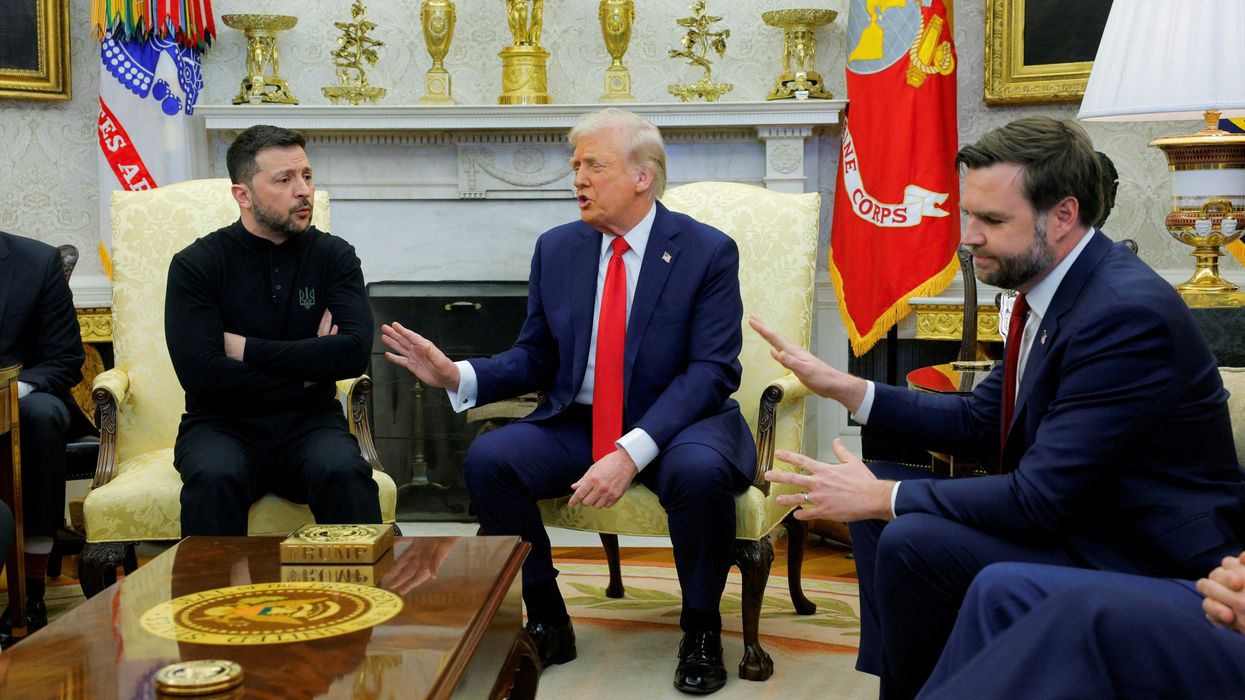The Bunker appears originally at the Project on Government Oversight and is republished here with permission.
Bomber builder losing money … for now
When playing Pentagon poker, when is a loss not a loss? When reading the tea leaves convinces you that today’s loss will yield a bigger win tomorrow. You knew this was coming as soon as the Air Force general in charge of dropping nuclear bombs dropped one last month: The Pentagon’s planned buy of 100 B-21 bombers isn’t enough. He really, honestly, truthinessly needs 145 of the bat-winged warplanes.
Things have changed since that original number was set in 2011, and it just won’t do in today’s world, General Anthony Cotton, chief of the U.S. Strategic Command, said March 18. “The production rate that was agreed upon was, I think, in [that] geopolitical environment. That’s a little different than the geopolitical environment that we will face for decades to come,” he said. “Hence, I, as a customer, would love to see larger production rates.”
So, as day follows night, 35 days later Northrop announced that it was taking a $477 million loss on its B-21 program. Largely, that’s so it — wait for it! — can build more of the highly-classified bombers, faster. Much of that sum is dedicated to an unspecified production “process change” for the B-21. “That process change supports the accelerated production rates,” Kathy Warden, Northrop’s CEO, said April 22. “We can ramp beyond the quantities in the program of record,” she added, referring to the Air Force’s piddling 100-bomber buy. “Which is something that we and the government decided was important for the optionality to support the scenarios that they have been looking at to increase the current build rate.”
“Optionality”?
Of course, pretty much everything about the B-21 Raider, including its “build rate” — how many a year we’ll get to buy — remains secret. But Northrop’s website does have a handy-dandy FAQ section dedicated to the bomber. “The U.S. Air Force has stated plans to acquire at least 100 aircraft,” it says. “Some defense analysts believe that the Air Force should plan to purchase at least 200 B-21s.” Gotta wonder how much of a bonus the PR whiz pocketed who added “at least 200.”
The B-21 made its first flight late in 2023, and five more bombers are now under construction in California. Capable of carrying both nuclear and non-nuclear weapons, the B-21 is slated to go operational in 2027. Calculating its cost can be challenging. Bloomberg reported in 2022 that the 100 bombers would cost $89.1 billion to produce, or $891 million a copy. But that’s based on 2019 dollars. While the bomber may have some ability to elude enemy radar, it can’t elude inflation.
But not to worry. That’s why we have Congress. On Sunday(!), April 27, GOP lawmakers proposed that the Pentagon needs $150 billion more, including $4.5 billion “for acceleration of the B-21 long-range bomber aircraft” (PDF).
Why isn’t good enough good enough?
Hurray for Lockheed! Sure, that’s not The Bunker’s usual take on the Pentagon’s biggest contractor. But on April 22, the company did something refreshing. Instead of challenging competitor Boeing’s recent winning bid to build the Air Force’s new F-47 fighter, it decided to improve the existing Lockheed-built F-35.
Now granted, the F-35 continues to be plagued by cost, production, and readiness woes. But when defense contractors lose a major contract, many opt to file a “bid protest” with the Government Accountability Office in hopes of reversing the decision. It rarely works and only serves to delay the program.
In this case, Lockheed has instead decided to cram some of the unspecified new technologies it has developed for its losing F-47 sixth-generation bid into the fifth-generation F-35. “There are techniques and capabilities … that were developed for [our F-47 bid] that we can now apply here,” Lockheed CEO Jim Taiclet said. “We’re basically going to take the [F-35's] chassis and turn it into a Ferrari.” That’s pretty funny, because four years ago the Air Force’s top officer said the F-35 was already a Ferrari. (And for all those years you thought the “F” in F-16s, F-35s, etc., stood for “Fighter.”)
But what’s not funny is something else Taiclet said: “My challenge here on my aeronautics team is, let’s get 80% of six-gen capability at half the price … they wouldn’t have agreed to this if they didn’t think there was a path to get there.” (But don’t think that’ll be a bargain. Best estimates suggest that F-47s will end up costing $300 million each, meaning a supercharged F-35 would cost $150 million.)
Why should it take losing a contract to compel a contractor to build something nearly as good for half the price? No doubt there’s some Lockheed hyperbole there. But it’s no more hyperbolic than the hypersonic frenzy used to justify the F-47. Here’s an inside tip: Foreign foes are never as threatening as those with an (in)vested interest in fighting them claim. And its corollary: Shiny new U.S. weapons are never as good when they roll off the assembly line as they are at conception.
The death of decapitation
You may have seen images of Pope Francis in his open coffin last week. That’s because the Vatican wanted you to see them. But what if some terror group — or rogue state — didn’t want the world to know their leader had been killed by a U.S. missile strike, or offed during a capture-or-kill mission that defaulted to the death option?
That’s no longer a theoretical question. “Synthetic media may allow terrorist organizations to simulate the continued presence of deceased leaders, undermining public belief in their deaths,” Army Lieutenant Colonel Matthew J. Fecteau wrote April 23 at West Point’s Modern War Institute website. “Generative AI is not just a tactical threat; it is a strategic disruptor that challenges the foundations of belief, perception, and reality in modern warfare.”
In other words, the next time a good guy kills a bad guy, AI could generate a fake living bad guy to declare: “You missed.”
Here’s what has caught The Bunker’s eye recently
Declaring you’re going to build a “Golden Dome” missile shield and building it are two very different things, NPR’s Geoff Brumfiel explained April 22.
James Holmes of the Naval War College autopsies the 1989 blast aboard the USS Iowa that killed 47 sailors and details how and why the Navy compounded the tragedy with its disgraceful investigation, April 23 in The National Interest.
→ War game
A new book by Phil Tinline, reviewed in the New York Times April 27, examines a 1967 magazine article that argued that war is “the essential economic stabilizer of modern societies.” It was a crafty hoax, but so well done, that it infects U.S. society even today.
Thanks for infecting The Bunker with your attention this week. Consider forwarding it to friends so they can subscribe here.
















